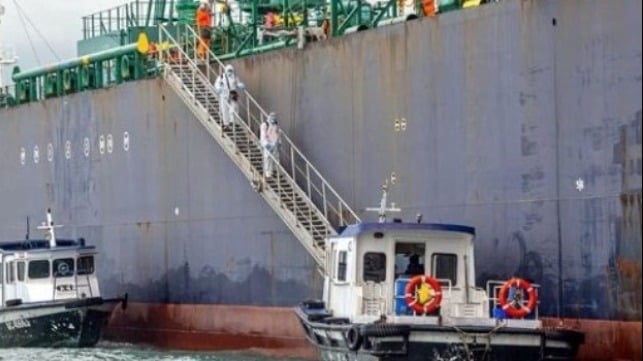Crew Working Beyond Contract Expirations Rose by a Quarter in May 2021

While the global crew change crisis has fallen from the headlines, new data shows that the number of crew working beyond their contracts rose by a quarter in May 2021. Increasing infection rates in key crew source countries, along with stricter crew change protocols in major ports were cited as driving the increase.
The June data from the Neptune Declaration Crew Change Indicator shows that the number of seafarers on board vessels beyond the expiration of their contract of employment has risen by 24 percent over the prior month. The data reports that 7.4 percent of crew were past the expiration of their contracts. Last month, the data showed that 5.8 percent of crew were beyond the expiration of their contracts.
“Unfortunately, the increase in seafarers onboard vessels beyond the expiry of their contract is not unexpected,” said Kasper Søgaard, Head of Research at Global Maritime Forum. “The negative development is driven by the rise in Covid-19 cases in important seafaring nations, such as India, Pakistan, Sri Lanka, Bangladesh, and the Philippines, and subsequently increased restrictions in major seafaring hubs. Information from the ship managers also indicates seafarers continue to have limited vaccine access, which would be a critical step forward to resolve the issue.”
The report, however, showed one potentially positive indicator in the crew change crisis. The number of seafarers on board vessels for over 11 months decreased by half in the second report. Less than half a percent of crew, 0.4 percent, are aboard over 11 months, down from 0.8 percent in the May indicator report. The internationally recognized Maritime Labor Convention stipulates that no crew should work more than 11 months without leave.
An analysis showed several factors as contributing to the current increase in the number of crew remaining aboard their ships. Key among the current data was the impact of increasing infection rates in key crew source countries, especially India, Pakistan, Sri Lanka, Bangladesh, and the Philippines. Because of the high infection rates, seafarers are both postponing their departure from their ships and others are not rejoining their ships, either because they have been exposed to the virus or their family member or their neighborhood is reporting cases of COVID-19.
Stricter crew change protocols in major ports have also delayed and complicated crew changes. Many countries renewed travel restrictions, causing canceled and delayed flights as the crisis developed in India. These restrictions again made it difficult for seafarers to reach crew change hubs or to travel home.

that matters most
Get the latest maritime news delivered to your inbox daily.
The organizers of the Neptune Declaration Crew Change Indication also highlighted the ongoing challenges and limited access in many parts of the world to COVID-19 vaccinations.
Launched in May 2021, the Neptune Declaration Crew Change Indicator is based on data from top 10 ship managers and aims to provide up-to-date information on the impact of the crew change crisis as well as the way it is evolving month to month. The report is uses aggregated data from 10 leading ship managers, including Anglo- Eastern, Bernhard Schulte, Columbia Shipmanagement, Fleet Management, OSM, Synergy Marine, Thome, V.Group, Wallem, and Wilhelmsen Ship Management, which collectively have about 90,000 seafarers currently onboard their ships.
